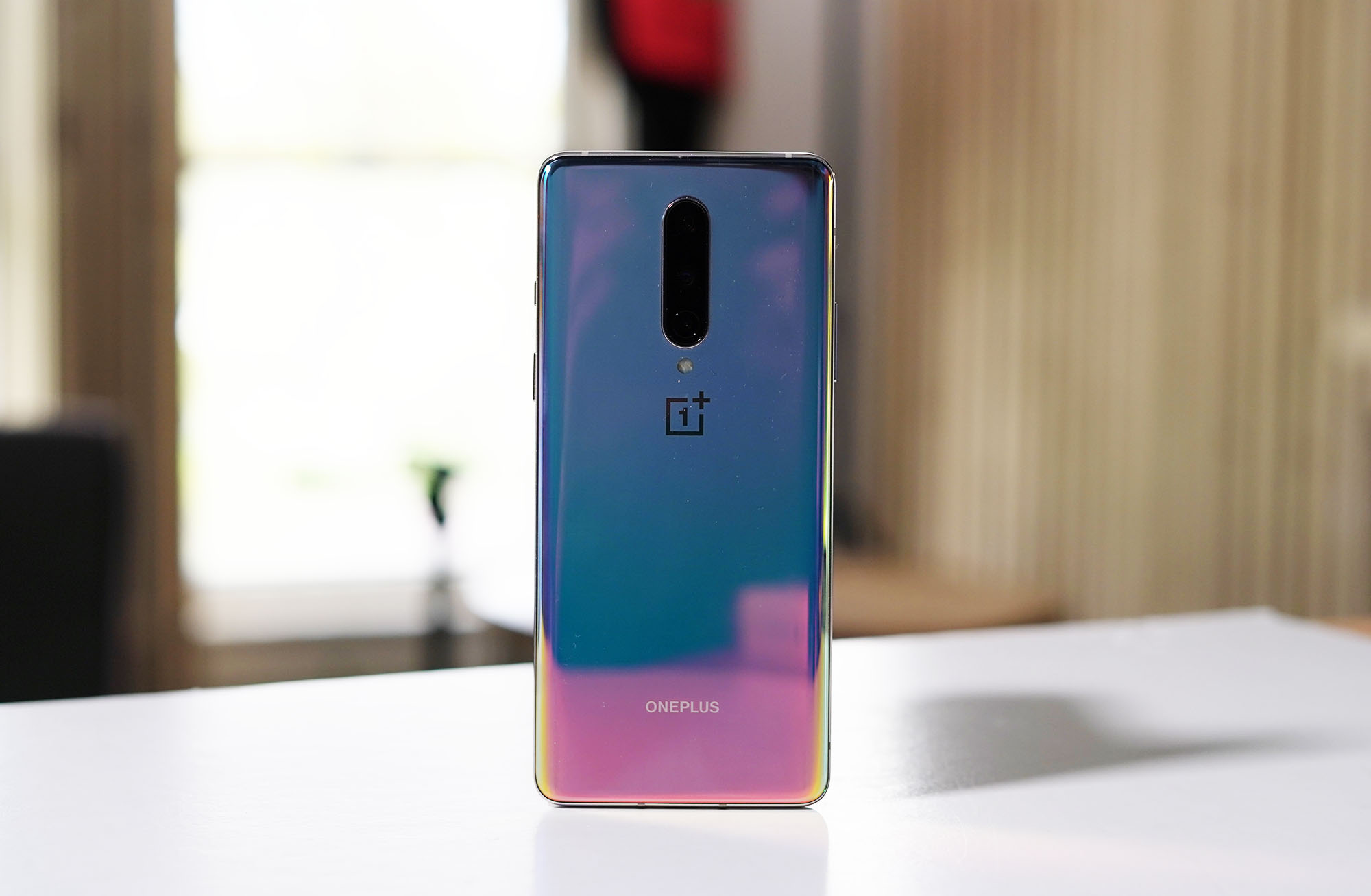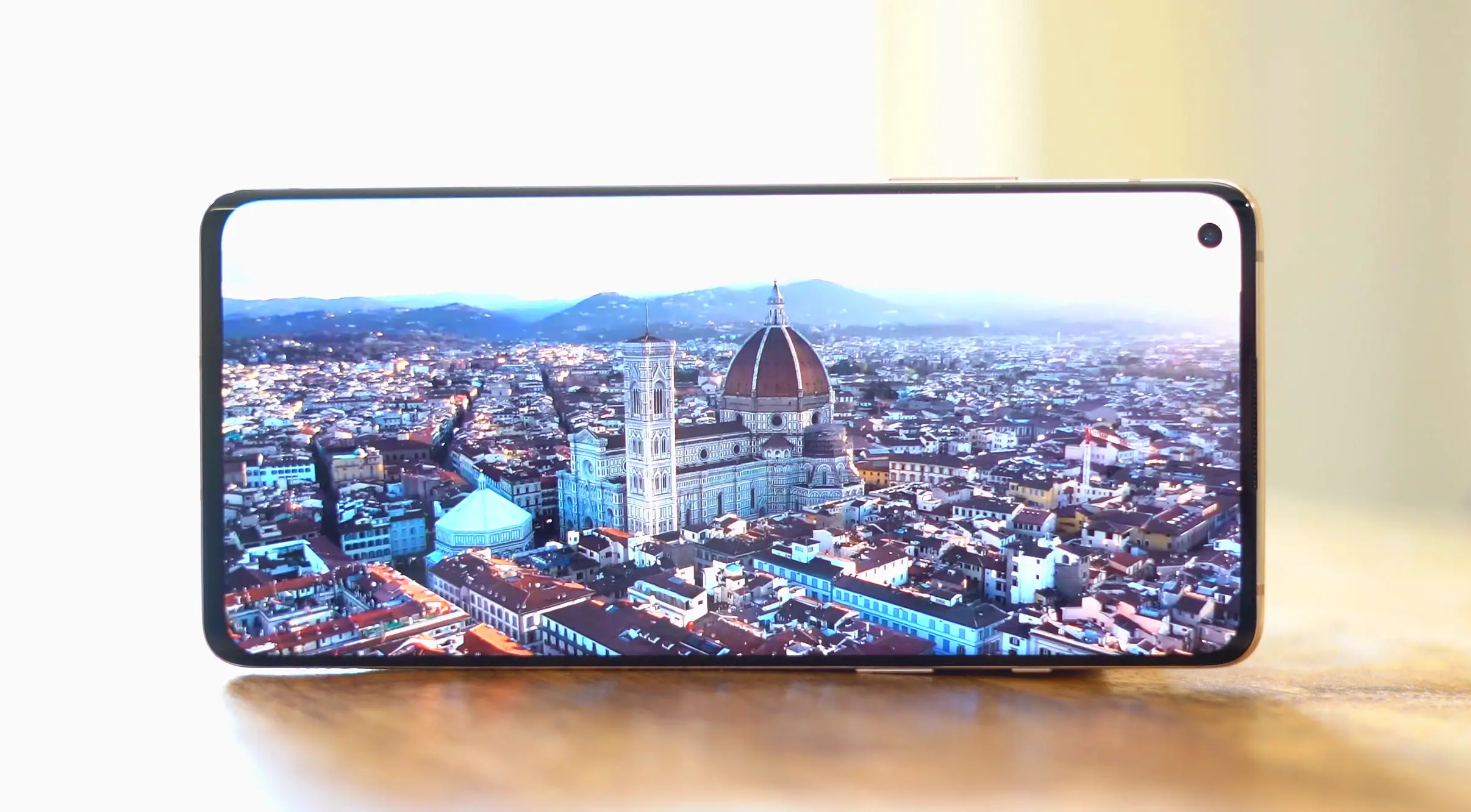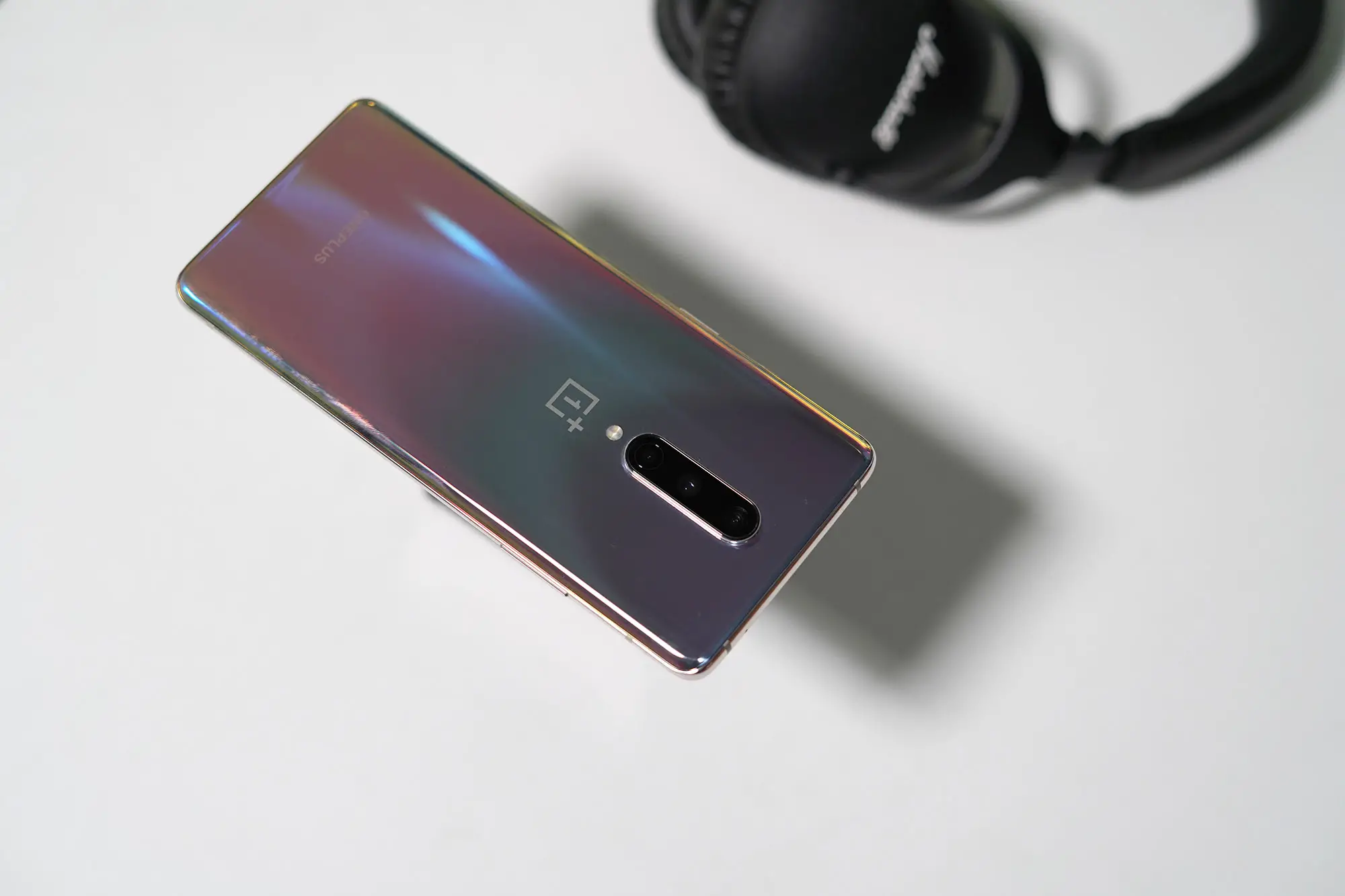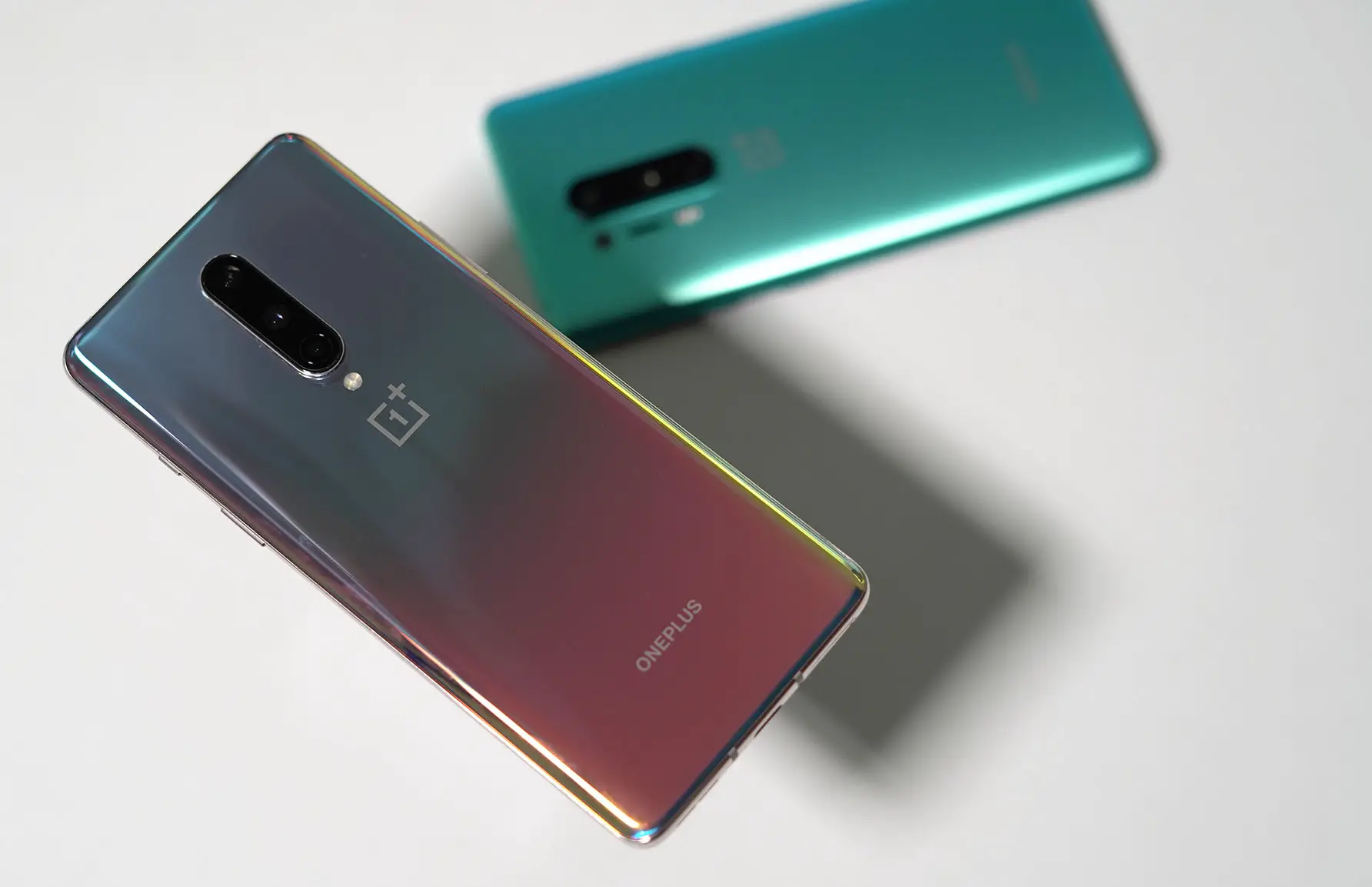This year, OnePlus delivered the new 8 Pro, a smartphone that can go head-to-head with the best devices of 2020. And then there's the regular OnePlus 8. It's basically the same size, has the same overall design, and the same incredible Snapdragon 865 chipset which means you get 5G baked right in. The main difference is that the Oneplus 8 costs $200 less, making it one of the most interesting flagship smartphones of 2020. But with the lower price tag, you also get a few additional compromises that you typically don't see on other flagship devices. The question is: is the OnePlus 8 too good to be true?
Buy OnePlus 8: starting at $699 on Amazon
When the OnePlus 8 and 8 Pro showed up at my doorstep a few days before they were officially unveiled, I'll admit that I unboxed the OnePlus 8 Pro and started using it first, but the next day, I took the 8 out of the box and only realized a few days later that I had forgotten completely about its bigger sibling.
Now while the phones do look a lot alike, there are a few significant differences between the two. I've already done a detailed comparison between these two phones, so make sure you check that out if that's what you're looking for. But in this review, I want to highlight why the OnePlus 8, despite its shortcomings is one of the best devices I've used this year.
Design & Hardware
The best place to start is with the phone's design. I'll admit that I'm a bit tired of the same old glass and metal slabs that manufacturers have been churning out for the past few years. It seems no one has had an original design idea in quite some time and the OnePlus 8 is no exception, especially when you compare it to last year's 7 Pro. I mean besides the lack of the pop-up camera in the newer device, OnePlus could have just used the same shell from last year. The only positive here is that its symmetrical design with a centrally located camera bump on the back and the Interstellar Glow finish is at least more interesting than the color options Samsung, LG, and Sony are pushing this year.
Other than that, you get a solidly built phone with OnePlus's usual notification switch, buttons with a satisfying click to them, and a device that doesn't go overboard in regards to its weight and overall size.
When it comes to the phone's main specs, OnePlus has delivered the bare minimum in order for the 8 to be classified as a flagship device in 2020. That includes the new SD865 processor, 8 or 12GB of RAM, and storage options that start at 128GB
But the phone does have its drawbacks, in true Oneplus fashion, you don't get wireless charging, no expandable storage, no headphone jack, and no official IP rating for dust and water resistance. If you're a wireless charging fan, that's a bit of a setback, but the lack of an IP rating shouldn't be a huge issue since Oneplus claims that they've done significant work to make sure the phone will survive accidental splashes and you shouldn't have any issues if you get caught in the rain. And in fact, the OnePlus 8 sold by US carriers actually comes with an IP68 rating with no perceptible physical difference in the hardware between the unlocked and carrier variants of the phone.
This means I should be able to do this and not have any issues. Don't try this at home. Of course, you should never go swimming with your phone or intentionally submerge your phone in water, but I think your OnePlus 8 will be just fine if you get pushed into a pool with the phone in your pocket.
So there's no wireless charging, no official IP rating, why in the world would I want to use this phone over other flagship devices? It's honestly quite simple. The OnePlus 8 offers the most well-balanced experience I've gotten from a flagship smartphone at a price that's actually reasonable.
This phone sells for $699. It's not exactly cheap, but its a full $200 less than the OnePlus 8 Pro which is, in turn, $100 cheaper than the cheapest Samsung Galaxy S20. With that extra $300 you could buy yourself a 55-inch 4K TV from TCL and still have an extra $20 leftover.
Naturally, there are some compromises that have been made to get the price this low, but those small tweaks to the hardware really don't make a huge difference when it comes to using the phone day-to-day.
Software
The first thing to note is that OnePlus delivers one of the best Android builds around. While manufacturers have been tweaking Android to make it more useful since the days of the HTC Hero, Oneplus has focused more on optimization, delivering one of the smoothest and coherent builds of Android you can currently find while also giving you immense customization power to make the phone truly your own.
There's nothing that gets in your way and the combination of the phone's software and incredible hardware makes the Oneplus 8 an exceptionally enjoyable device to use. Getting work done is a breeze, even when you're switching between multiple apps, sending emails, typing messages, or simply scrolling your social media feeds to kill time. It's also an amazing device for gaming, offering more than enough GPU power to take on the most graphic-intensive games that Android has to offer. And while the base model comes with 8GB of RAM, it can still multitask with the best of them, especially when you manually lock your most-used apps into memory so that they're always there, ready to go.
Display
One downside that some will point out is that the OnePlus 8's FHD+ display is a lower resolution than what we typically see in a flagship device these days. Those with a keen eye will be able to spot individual pixels when looking closely, but honestly, it's something that won't bother most people, especially if you're coming from an iPhone. And while the resolution isn't spectacular, the screen's 90Hz refresh rate is. Again, this isn't the best of the best with flagship devices this year hitting 120 and even 144Hz, but 90 is still quite amazing for a phone at this price point and honestly, I have absolutely no complaints on that front.
The curved display still isn't my favorite, adding unnecessary glare when using the phone in landscape mode while also introducing false taps when using the phone one-handed. I would have preferred the flat display of the OnePlus 7T, but this comes down to personal preference.
Cameras
As for the phone's cameras, the OnePlus 8 offers a good balance by delivering a pretty decent 48MP main camera and 16MP ultrawide, but the 2MP dedicated macro camera is a bit perplexing since it's honestly not that good. The main camera does a good job of capturing detailed shots, even in low light, though it's still not quite on the same level as other 2020 flagship devices.
OnePlus's choice to replace the zoom camera for the ultrawide was a good decision in my book, giving you a different perspective with the wider field of view. I can't put my finger on it, but there's something satisfying about tapping that ultra-wide button in the camera app and seeing so much more in your shot. It would have been nice if OnePlus had used the same lens and sensor that the 8 Pro is using for its ultra-wide since the images here aren't quite as sharp, but if you're not a photography snob, it'll get the job done. And of course, you can always use the 48MP sensor to digitally zoom into your subject if you can't physically move closer.
















For its front-facing camera, the OnePlus 8 uses a 16MP sensor to capture you and your friends with crisp and detailed selfies. I was honestly surprised by how sharp the images were even when compared to devices like the S20, though again it's not that great in low-light conditions, especially since OnePlus hasn't enabled the nightscape setting for the front-facing camera as Google has for its Pixel phones.
Battery life
Now, this phone does have a smaller battery than its sibling and most other high-end devices from this year, but at 4300 mAh, the OnePlus 8's battery still delivers impressive lasting power. With its slightly-smaller display and lower refresh rate, the 8 actually lasts just as long as the 8 Pro.
Naturally, not having wireless charging feels like an oversight even for a phone in this price range. But OnePlus wouldn't want to settle for ordinary Qi charging and I'm sure we all know by now that the company's proprietary 30w wireless charging tech doesn't come cheap.
At least you get Warp Charge 30T that will deliver a 50% charge in just over 20 minutes or a full charge in less than an hour.
Final thoughts
There's no denying that the OnePlus 8 has its fair share of compromises. Compared to most flagship devices, some would consider this phone to be a joke or a poor man's version of what a flagship smartphone should be.
But here's the thing, no one really needs a flagship smartphone like the Galaxy S20+ or a Huawei P40 Pro. While those devices do push the industry forward, they're the supercars of the smartphone world, aspirational devices that cost a lot more than they should, smartphones that are packed with unnecessary features that don't fundamentally change what a smartphone is and does.
The Oneplus 8 keeps it simple, while not compromising on the overall experience. And the best part is that this phone costs $300 less than the cheapest Galaxy S20 device. If you're not a tech enthusiast who simply has to have the best of the best, but still want a great smartphone with amazing performance and a good camera, the OnePlus 8 is currently the best phone you can buy while not breaking the bank.
OnePlus 8 Rating: star_fullstar_fullstar_fullstar_fullstar_empty (4/5)
The Good
- Amazing value
- Great performance
- Solid cameras
- All-day battery life
- Clean software build
The Bad
- No wireless charging
- No official IP rating
The Bottom Line
The OnePlus 8 may not excite the tech enthusiasts, but it's still one of the best smartphones of 2020 despite the fact that it's $200-$300 cheaper than its closest competitors.
from Phandroid https://ift.tt/2Z37RmI
via IFTTT





No comments:
Post a Comment